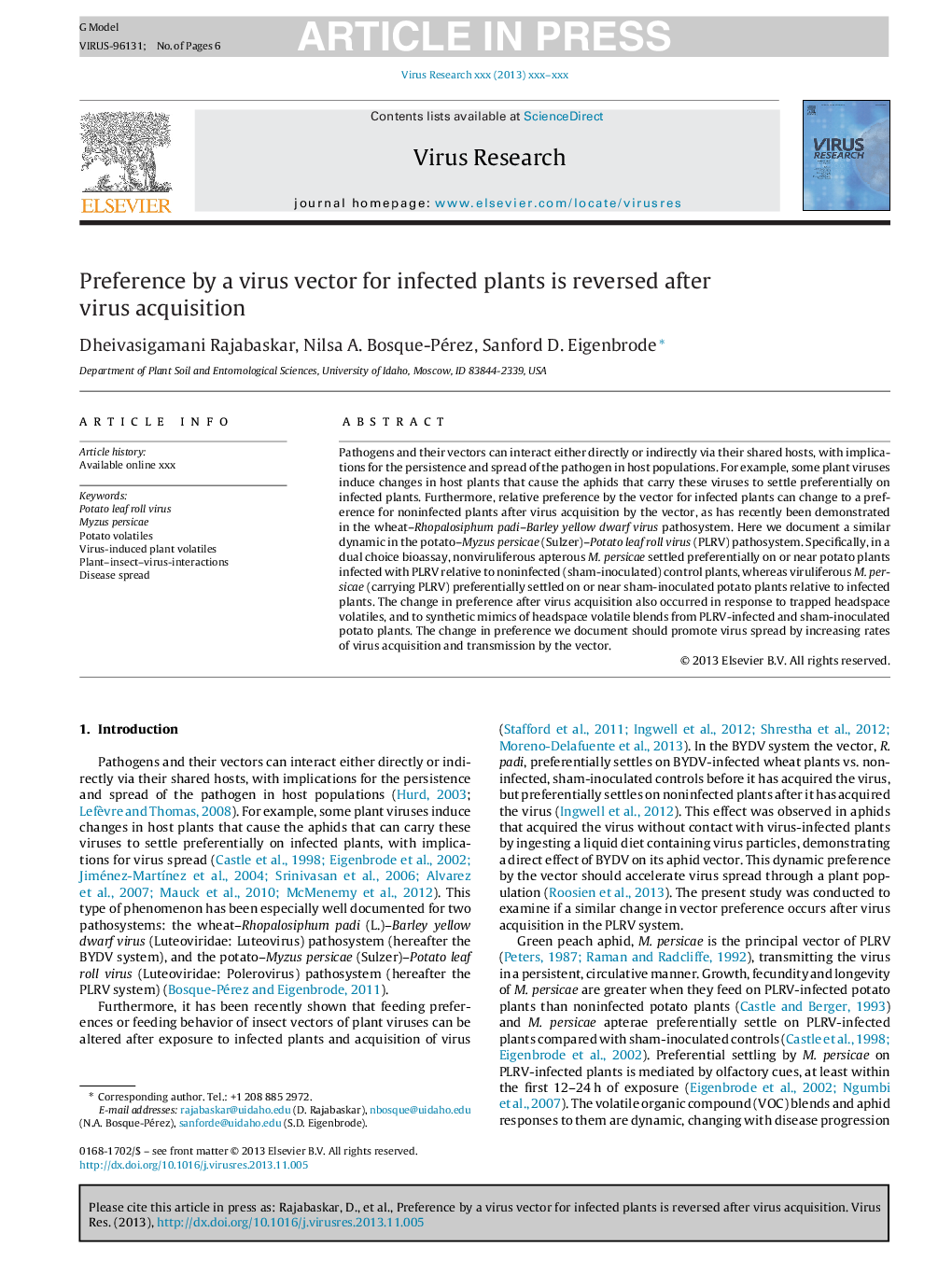| Article ID | Journal | Published Year | Pages | File Type |
|---|---|---|---|---|
| 6142427 | Virus Research | 2014 | 6 Pages |
Abstract
Pathogens and their vectors can interact either directly or indirectly via their shared hosts, with implications for the persistence and spread of the pathogen in host populations. For example, some plant viruses induce changes in host plants that cause the aphids that carry these viruses to settle preferentially on infected plants. Furthermore, relative preference by the vector for infected plants can change to a preference for noninfected plants after virus acquisition by the vector, as has recently been demonstrated in the wheat-Rhopalosiphum padi-Barley yellow dwarf virus pathosystem. Here we document a similar dynamic in the potato-Myzus persicae (Sulzer)-Potato leaf roll virus (PLRV) pathosystem. Specifically, in a dual choice bioassay, nonviruliferous apterous M. persicae settled preferentially on or near potato plants infected with PLRV relative to noninfected (sham-inoculated) control plants, whereas viruliferous M. persicae (carrying PLRV) preferentially settled on or near sham-inoculated potato plants relative to infected plants. The change in preference after virus acquisition also occurred in response to trapped headspace volatiles, and to synthetic mimics of headspace volatile blends from PLRV-infected and sham-inoculated potato plants. The change in preference we document should promote virus spread by increasing rates of virus acquisition and transmission by the vector.
Related Topics
Life Sciences
Immunology and Microbiology
Virology
Authors
Dheivasigamani Rajabaskar, Nilsa A. Bosque-Pérez, Sanford D. Eigenbrode,
